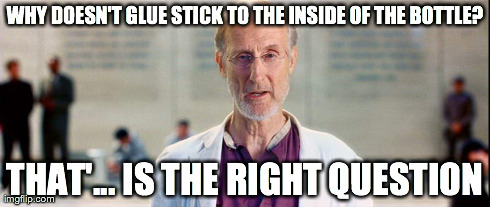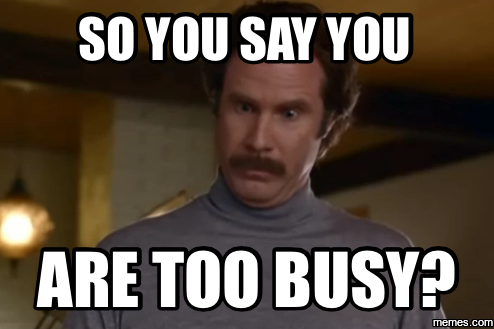UX is big business.
In fact, right now there are more UX open positions on job boards than there are for Front End developers. Which doesn’t make much sense, unless there’s a sudden shift in the market in 6 months time when there’s a ton of wireframes ready and no one around to take them live. But I’m happy to go with the flow.
So how do you secure your dream job in this market?
Without experience you won’t be able to reach beyond a mid-level position, but what ‘experience’ do others have? Is it worth dropping down a level just to get in the door? Is time sat at a desk on a project more valued than a creative spark or natural talent? I don’t know, I’m asking you.
But here’s my advice to young folk wanting to muscle in. Listen up, whipper-snappers.
What you need are 3 things – a portfolio (to show what you can do), an awareness of what you need to do (and why we do it), and an understanding of the marketplace for the client.
And, for inspiration, look at Donald Trump – if anything it shows you can be vastly underqualified for a role … but apply and still get it. If that doesn’t give you hope, then nothing will!

I can’t help with your portfolio or research into what your dream client does, but can shed a little light on what you need to do.
So, what is it that we do?
Basically, in all my years of UX I’ve learnt one thing that helps me get by.
Everything we do is all about ‘conversions’ – almost always people look at the baseline: overall number of sales (ecommerce), or number of sign-ups (charity awareness type sites), or even just ‘hits’ on a page (some type of 1990s reunion tour?).
Wait, that’s it?
No, no, no, I was setting the scene, the thing is that most people measure success by the baseline of First Time users. And First Time users are a nightmare, you never know what they’re going to do. So don’t target them unless you have to. (Check out ‘When UX isn’t fair’ – coming to a LinkedIn Article near you soon about my experience buying a bush online! Yes, a bush.)
You need to focus on Customers. Yes, in bold letters. And even an underline. I’m really selling this one.
What is a Customer?

Ah, in I Robot style, that is the right question.
Users = yet to purchase
Customers = have a purchase history
Let’s break down ‘UX’ into goals. What should we all target?
1) Conversions
2) Customer Retention
3) Upsell Opportunities
Conversions, especially through the elusive Holy Grail of any army of First Time Buyers, are always the exciting goal. But what happens if they don’t come back?
You need to focus on repeat & returning customers. I worked for a global electronics company, and conversions from customers was typically four or five times higher day-in, day-out than users. Why? Because they’ve bought before so they know: 1) it is secure, 2) the products arrive as expected, 3) it wasn’t too painful an experience, and 4) it saves time over registering elsewhere.
How many times when creating wireframes do you ignore the My Account pages until the end? They’re definitely not as glamorous as the home page, but shouldn’t we be catering for these loyal customers, making an experience that is more enjoyable for them too?
Personalisation is going to be a huge thing. In fact, I’ve got something I’m hoping will ‘disrupt’ the web scene. Believe me, it’s good. But you can’t have it. Not yet.

Getting back to the price of bacon
In the words of Alan Sugar from an episode of The Apprentice from a few years ago, anyone can sell £10 notes for £5. That’s an easy 100% conversion rate right there, but unless you have another IT glitch, they won’t be back to purchase a regular crisp fiver if it was a terrible experience to make a purchase. I’m not sure who these people are who purchase £5 notes online, but bear with me.
What makes a customer return? This is the big one, and the one most people forget about. Or don’t bother with in the first place.
1) Ease of use,
2) speed of purpose and
3) user satisfaction.
Help them enjoy what they need to do.
People on your site don’t have as much time as we think they might. They want to get in, get the job done, then get out.

Imagine though if a My Account section wasn’t just filled with Invoices, Order History, and other financial stuff where the highlight is using a automagic Post Code finder to change your address (I still love those things and enter in random post codes just for the fun of it). Why don’t we stick a “You Might Also Like…” or “We hope you enjoyed ‘x’, have you thought to try ‘y’?” section in here? Ground-breaking? Maybe!
Where do we go from here?
So in all you do, bear that loyal customer in mind – and if you can entice them to add a little extra to their cart as they make their way to checkout, then you’ll be the boss someday.
Fire up your Balsamiq, Axure or Sketch, redesign a checkout journey, and I look forward to buying something online from your new client one day soon! (Just not another bush).
—
Jordan Taylor has been developing websites since, well, let’s just say a LONG time ago. He has worked on UX and Front End projects for many global ecommerce projects including Gucci.com, Superdrug and Dr Martens. He is currently a UX Architect on a major SaaS development project, and the lead on an NDA-driven Front End only team of stealthy ninjas for high end “on shore” Hybris and Demandware projects, called Rapid Commerce. And he likes memes based around random movies he watches repeatedly.
